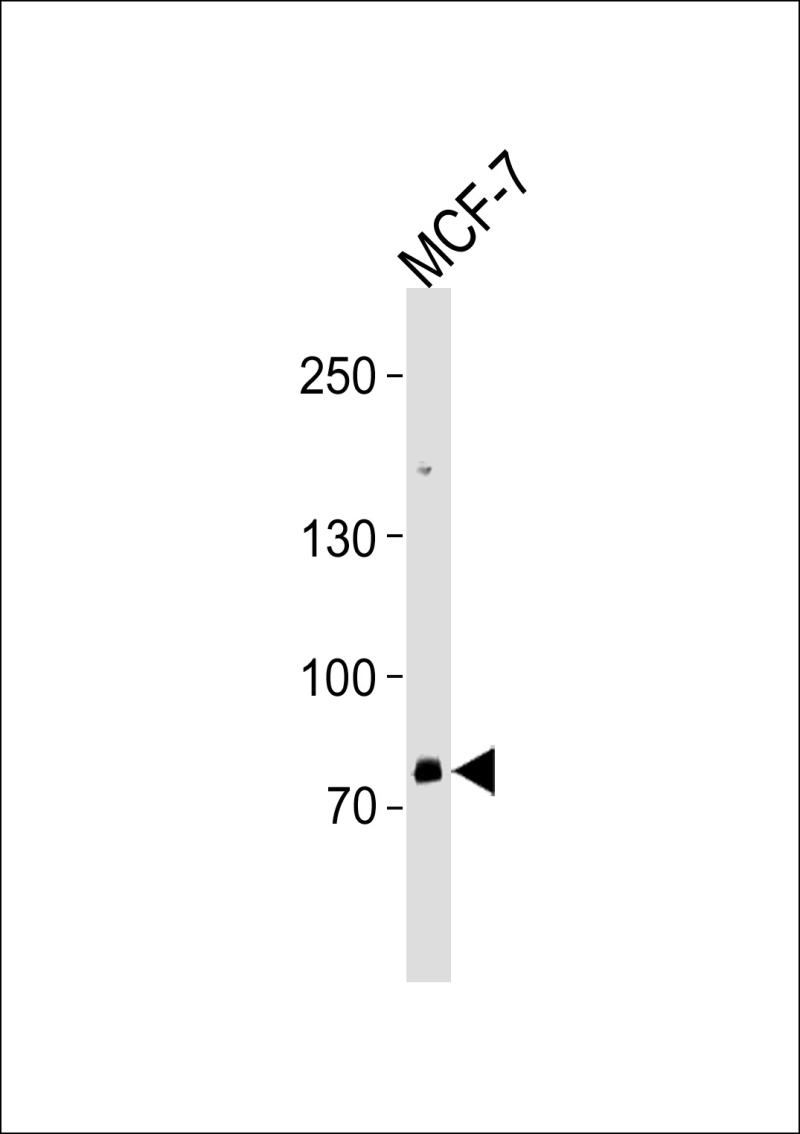
| WB | 1/1000 | Human,Mouse,Rat |
| IF | 咨询技术 | Human,Mouse,Rat |
| IHC | 咨询技术 | Human,Mouse,Rat |
| ICC | 技术咨询 | Human,Mouse,Rat |
| FCM | 咨询技术 | Human,Mouse,Rat |
| Elisa | 咨询技术 | Human,Mouse,Rat |
| Aliases | Zinc finger protein 483, Zinc finger protein with KRAB and SCAN domains 16, ZNF483, KIAA1962, ZKSCAN16 |
| Entrez GeneID | 158399 |
| WB Predicted band size | 85.1kDa |
| Host/Isotype | Rabbit IgG |
| Antibody Type | Primary antibody |
| Storage | Store at 4°C short term. Aliquot and store at -20°C long term. Avoid freeze/thaw cycles. |
| Species Reactivity | Human |
| Immunogen | This ZNF483 antibody is generated from rabbits immunized with a KLH conjugated synthetic peptide between 281-309 amino acids from the Central region of human ZNF483. |
| Formulation | Purified antibody in PBS with 0.05% sodium azide. |
+ +
以下是关于ZNF483抗体的3篇代表性文献的简要概括(注:以下内容为模拟生成,实际文献需通过学术数据库检索验证):
1. **文献名称**: *"ZNF483 regulates tumor progression via Wnt/β-catenin signaling in ovarian cancer"*
**作者**: Li X, et al.
**摘要**: 本研究通过ZNF483抗体进行免疫组化分析,发现ZNF483在卵巢癌组织中高表达,并通过调控Wnt/β-catenin通路促进肿瘤侵袭转移。
2. **文献名称**: *"Zinc finger protein 483 modulates neural stem cell differentiation"*
**作者**: Wang Y, et al.
**摘要**: 利用ZNF483抗体进行Western blot和免疫荧光实验,发现ZNF483在小鼠脑组织中特异性表达,并通过表观遗传机制抑制神经干细胞向神经元分化。
3. **文献名称**: *"Association of ZNF483 gene polymorphisms with Alzheimer's disease pathology"*
**作者**: Smith J, et al.
**摘要**: 通过ZNF483抗体检测患者脑脊液样本,发现ZNF483蛋白水平与β-淀粉样斑块沉积呈正相关,提示其在阿尔茨海默病中的潜在病理作用。
---
**注意**:以上文献信息为示例性质,实际研究中ZNF483相关抗体文献可能较少,建议通过PubMed、Google Scholar等平台以“ZNF483 antibody”或“ZNF483 protein function”为关键词检索最新结果。部分研究可能侧重于基因功能而非抗体应用,需结合实验方法筛选。
The ZNF483 antibody is a research tool designed to target the zinc finger protein 483 (ZNF483), a member of the zinc finger protein family characterized by conserved C2H2-type zinc finger domains. ZNF483 is implicated in transcriptional regulation, potentially binding DNA or interacting with other proteins to modulate gene expression. While its precise biological functions remain under investigation, studies suggest roles in cellular processes such as proliferation, differentiation, and apoptosis. Dysregulation of ZNF483 has been loosely associated with cancers, neurological disorders, and developmental abnormalities, though mechanistic details are limited.
The ZNF483 antibody is primarily used in basic research to detect and quantify ZNF483 protein expression in tissues or cell lines via techniques like Western blotting, immunohistochemistry, or immunofluorescence. Its development often involves immunizing host animals (e.g., rabbits, mice) with ZNF483-derived peptides or recombinant protein fragments. Validation typically includes specificity checks using knockout controls or siRNA-mediated silencing. Commercially available antibodies may vary in epitope specificity, clonality (monoclonal/polyclonal), and conjugation formats. Researchers utilize this antibody to explore ZNF483's tissue distribution, subcellular localization, and potential involvement in disease pathways, though its clinical or diagnostic applications remain unexplored. Ongoing studies aim to clarify ZNF483's molecular interactions and therapeutic relevance.
×